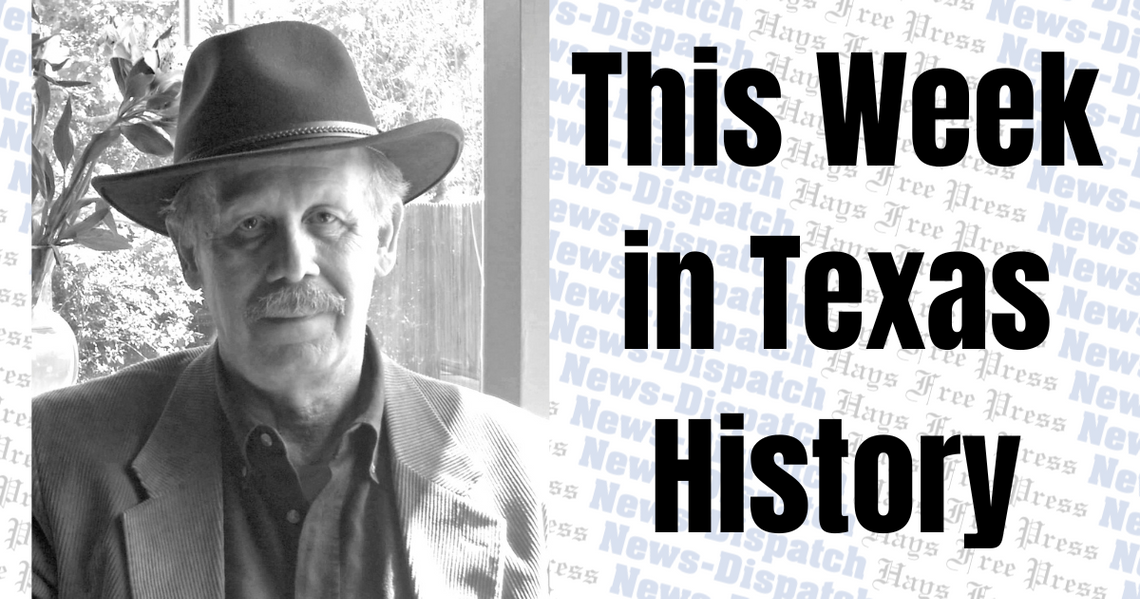President Franklin Roosevelt secretly signed an executive order in early April 1942 that allowed American aviators to join Claire Chennault’s volunteers in China.
With the United States still eight months away from entering the escalating worldwide conflict, support for the “Flying Tigers” had to be discreet. But FDR never regretted taking the risky move. During the dark days after Pearl Harbor, the Texan’s daredevils gave American morale a much-needed boost with their aerial thumping of the Japanese air force.
Born in Commerce, Texas in 1890, Claire Lee Chennault was a factory worker when the U.S. entered the First World War. The 26 year old father of three applied for flight training but wound up in the infantry due to his age and number of dependents.
While stationed in San Antonio, Chennault took private flying lessons and pestered the brass at Kelly Field until he was finally accepted as a flight cadet. By the time he won his wings, however, the war in Europe was over.
Refusing to come down to earth, Chennault secured a commission in the Air Service. Seventeen years later, he was a washed-out pilot with a dead-end career. His abrasive personality repeatedly ruined all chances for advancement, and a hearing loss eventually resulted in his permanent grounding.
Then in 1937 a letter arrived quite unexpectedly from an old friend inviting Chennault to China. Chiang Kai-shek, the Nationalist leader, would pay him handsomely to conduct a confidential inspection of his air force. The frustrated flyer resigned from the service and by May was on his way to Asia.
The Japanese had invaded the Chinese mainland six years earlier and seized control of Manchuria. Confronted by a mutual enemy, the Nationalists under Chiang and the Communists led by Mao Tse-tung put off their fight to the finish and warily united against the aggressor.
Chennault needed only a few days to conclude that Chiang’s antique aircraft and poorly trained pilots constituted a pitiful excuse for a combat-capable air corps. The Generalissimo, who had been misinformed by subordinates afraid to break the bad news, was shocked by the plain-spoken Texan’s appraisal. Despite his deep distrust of foreigners, Chiang hired him on the spot to whip his air wing into shape.
Chennault eagerly embraced the Nationalist cause for three reasons. First, the personal challenge of building a modern air force was too exciting to resist. Second, he believed the Japanese-Chinese conflict was the prelude to a war that would envelope the whole planet. And third, he was already under the spell of the charismatic Chiang.
Chennault would later startle President Roosevelt with his enthusiastic assessment of Chiang Kai-shek as “one of the two or three greatest military and political leaders in the world,” an opinion practically no one shared. The tumultuous events of the next two decades did nothing to alter the Texan’s view of the doomed and badly flawed Chiang.
For three years, Chennault toiled tirelessly to put a first-class Chinese response in the air against the Japanese but at best achieved only mixed results. He at first spurned a suggestion from Madame Chiang to recruit experienced mercenaries as pilots but in the spring of 1941 made a trip to the States for precisely that purpose.
A colorful crew of 250 misfits, adventurers and idealists signed on as fliers and technicians at $250 to $750 a month plus a $500 bonus for each Japanese plane shot down. During its short seven-month existence, the members of the American Volunteer Group – the official title of the Flying Tigers – more than earned their pay.
In fierce dogfights over China, the Tigers recorded 299 confirmed kills against their Japanese opponent, another 150 which lacked full verification and destroyed 200 more enemy planes on the ground. Their own combat losses were an even dozen aircraft.
An estimated 1,500 Japanese died at the skilled hands of the Tigers, whose own casualties numbered 23. During the Allied disasters of late 1941 and early 1942, Chennault’s volunteers were virtually the sole source of victories in the Pacific.
The Flying Tigers flew their final missions in July 1942, and the handful that stayed behind was absorbed into the Army Air Corps. Chennault reluctantly returned to active duty and resumed his stormy relationship with his superiors. Feelings were so strained by the end of the war that he did not even receive an invitation to the surrender ceremony in Tokyo Bay.
The embittered Chennault retired for good after WWII, divorced his wife of 35 years and went back to China. He married Anna Chan, a Chinese journalist, and in January 1946 started China Air Transport.
When the truce between the Nationalists and Communists dissolved into bloody civil war, Claire Chennault’s cargo planes supplied Chiang’s troops. In 1948 he retreated to Taiwan with his defeated hero and died from cancer nine years later at the age 68.
“Texas Entertainers: Lone Stars in Profile” is full of talented Texans who deserve a curtain call. Order your copy by mailing a check for $24.00 to Bartee Haile, P.O. Box 130011, Spring, TX 77393.










